About two thirds of the world’s megalithic (large stone) artwork is at Brú na Bóinne and the surrounding Boyne Valley in Ireland, which is why the area has been designated a world heritage site.
Many of the designs have been worn away by the weather but enough survive to give us a good idea of the nature and the scope of the work created towards the end of the Stone Age.
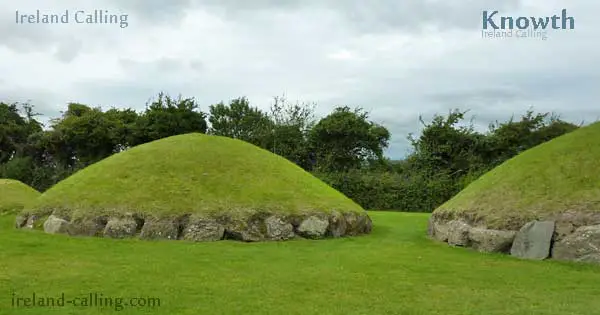
The artwork at Bru na Boinne is made up largely of patterns carved into the smooth face of huge sandstones weighing an average of three tons. These are mainly circular, spiral and linear shapes but there are many other patterns too. The best preserved examples can be found at Knowth.
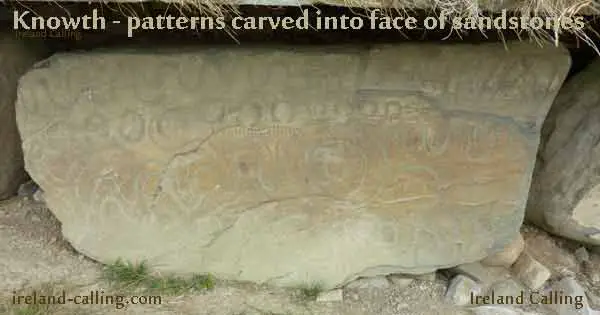
No one knows for certain what the designs mean or what they represent. The stones were carved approximately 5,000 years ago. There are no written records from that time and no oral tradition of stories being handed down.
The New Stone Age people who created Brú na Bóinne preceded the Celts by more than 4,000 years and we know nothing about them except for what we can glean from what they left behind.
Interpreting megalithic art – largely educated guesswork
It means that interpreting their art is largely just educated guesswork. There are numerous theories but they fall into three main schools of thought.
- The first theory is that the carvings are an ancient form of written language. The patterns could perhaps denote the names of those buried inside the tombs, and perhaps say something about their status as kings and chieftains, or perhaps priests and holy men. Perhaps they could be prayers or epitaphs. No one has been able to find a key that might unlock such a language if it exits.
.
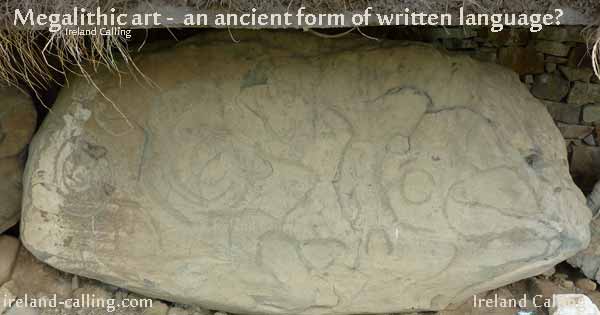
. - A second theory is that the designs are a form or map or chart, perhaps relating to the local landscape, or perhaps relating to the stars and planets and their movements. Again, there is no discernible pattern that we can recognise.
- A third theory is that the carvings may have nothing to do with the formal structures of language or charts, but are depictions of dreams or hallucinations, possibly from holy men or priests trying to describe what they see in visions from the gods or the spirits of their ancestors buried in the tombs.
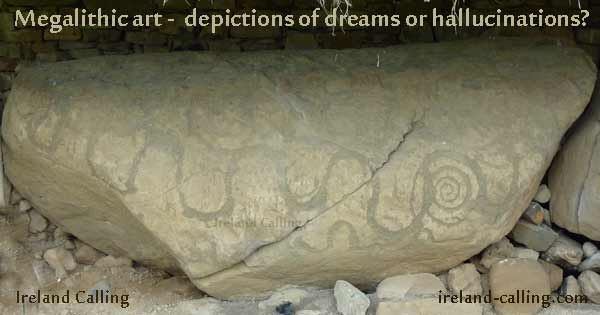
However, as with the other two theories, there is little evidence. There is nothing in any of the carvings that could be said to look like a person or any form of creature or spirit.
Lack of evidence allows people free to speculate
The lack of evidence leaves people free to speculate and come up with their own ideas. The three theories mentioned here all seek to find order and meaning.
This is understandable as Brú na Bóinne was clearly a special place, designed to inspire awe and wonder. It was a massive undertaking. Knowth and Newgrange are thought have been the largest manmade structures in Europe for thousands of years.
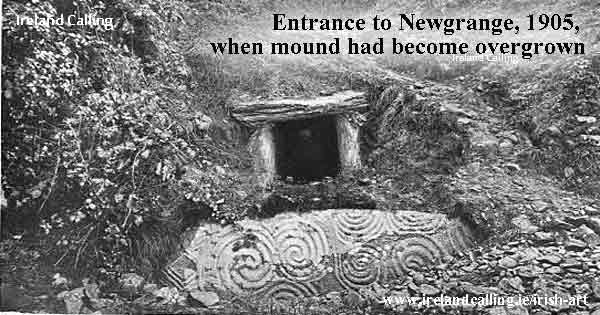
Newgrange kerbstone today.

The stones on which the art is carved weigh an average of three tons and had to be transported from 20 kilometres away. The whole Brú na Bóinne complex took an estimated 60 to 80 years to construct. It clearly had spiritual meaning and was used as the resting place for the highest in society.
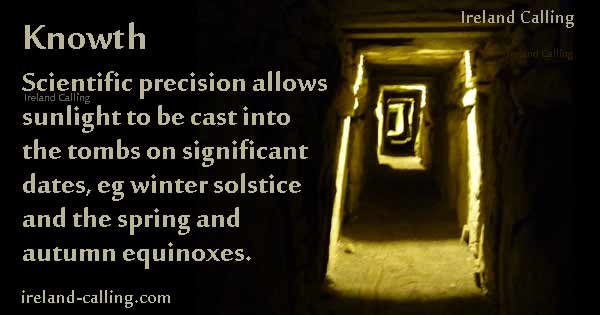
The tombs are carefully designed with scientific precision to cast sunlight into the tombs on significant dates such as the winter solstice and the spring and autumn equinoxes. The mounds are carefully constructed with layers or stones and earth to ensure good drainage and prevent water getting into to the tombs.
Everything about Brú na Bóinne suggests order and design of the highest standard. Nothing was left to chance. It seems reasonable, therefore, to assume that the artwork must have meaning, in line with the order and meaning seen in everything else on the sites.
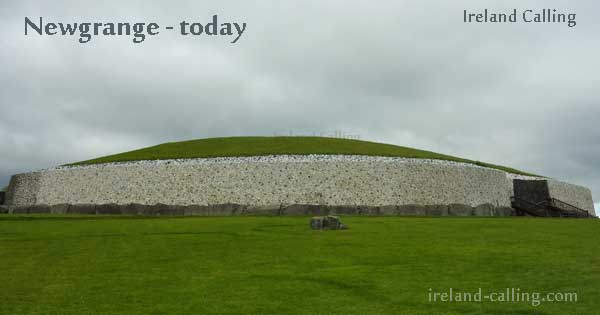
If there is such a meaning, no one has yet been able to find it. In the absence of any proof, some people might wonder whether the patterns are no more than glorious decoration: the final, frivolous touch to a project that has otherwise been steeped in meaning.
Perhaps having done all the hard, serious work, they felt entitled to add a little light relief.
This may not be such a frivolous idea. It’s the instinct of many artists to create their work simply to please the eye. It’s often the critics and academics who later seek to add meaning to that work of art.
Is that what has happened at Brú na Bóinne? We’ll probably never know for sure but with almost as many theories as experts, everyone is free to speculate.
More history Articles
The Neolithics – first people to leave their mark on Ireland
Ireland Calling Videos
Check out the Ireland Calling YouTube Channel for more great videos like these https://www.youtube.com/channel/UCeUHaUtxJKkp66t0V_uXh9Q
Check out the Ireland Calling YouTube Channel for more great videos like these.
